Pickleball players! Prepare to enter the fierce world of paddle warfare, where two formidable opponents await their ultimate showdown: carbon fiber and graphite. These two materials have taken the pickleball community by storm, each boasting its unique characteristics and loyal supporters. But what truly sets them apart? This battle of the paddles will show the depths of their construction, performance, and playability to answer the burning question: Carbon Fiber vs. Graphite Pickleball Paddles – what’s the difference? So, read on and unveil the secrets behind these sporting juggernauts and determine which exudes true paddle power!
What materials are Pickleball Paddles made of?
Pickleball paddles are an essential piece of equipment necessary to play the game of pickleball, a popular sport that combines elements of badminton, tennis, and table tennis. These paddles come in various shapes, sizes, and materials. In this section, we will explore the different types of materials used to make pickleball paddles.
Wood
In the early days of pickleball, wooden paddles were the pioneers, tracing back to the game’s inception in 1965. Crafted from various types of wood like maple, poplar, or basswood, these paddles possess distinct characteristics.
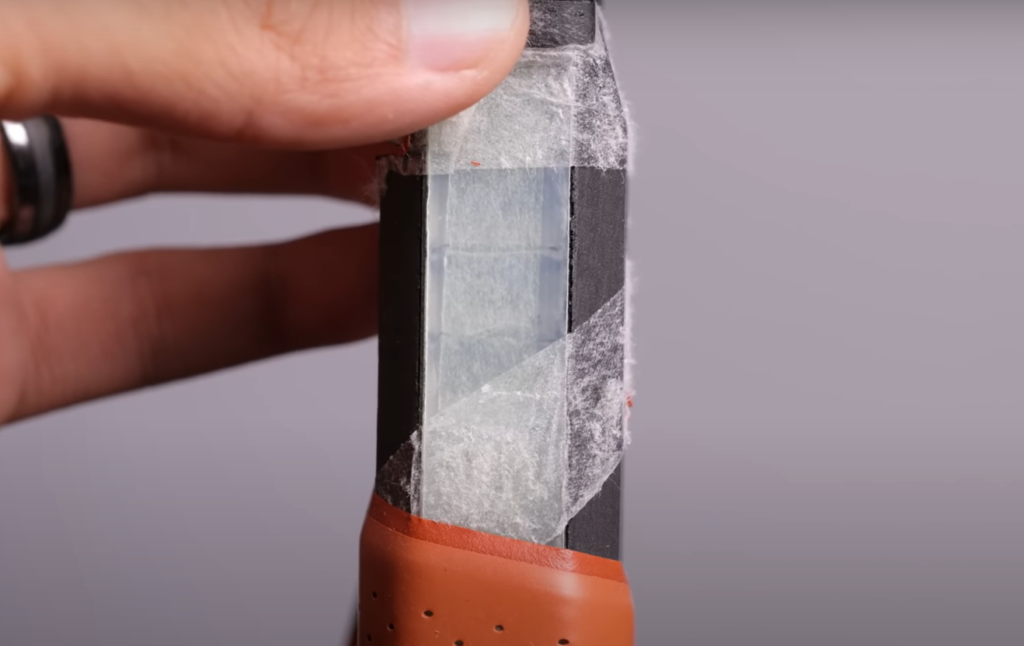
Wood paddles, although heavier and featuring a smaller sweet spot compared to their counterparts, exude a unique feel and traditional charm. However, they are not impervious to the effects of time and environment. Changes in temperature and humidity can cause warping, potentially impacting their performance and adding an element of unpredictability to the game.
Composite
Composite pickleball paddles, consisting of a carefully crafted fusion of materials like fiberglass, graphite, and carbon fiber, offer a perfect balance of strength, flexibility, and durability. These innovative paddles are not only known for their lightweight construction, but also for their exceptional resilience, making them a preferred choice among players of all skill levels. With an extended sweet spot, composite paddles empower players by providing enhanced power and precision in every shot. It’s worth noting that while composite paddles may come with a slightly higher price tag compared to other materials, their superior performance and longevity make them a worthwhile investment for pickleball enthusiasts.
Polymer
Polymer pickleball paddles, crafted from polypropylene, a type of plastic known for its versatility and durability, are an excellent choice for players seeking a combination of affordability and performance. These paddles boast a lightweight design, making them easy to maneuver on the court, while their large sweet spot ensures consistent and powerful shots akin to those produced by composite paddles. Although polymer paddles may offer slightly less control and power compared to paddles made from other materials, their overall value and reliability make them a popular option among players of all skill levels.
Aluminum
Aluminum pickleball paddles are crafted meticulously from a single piece of high-grade aluminum, ensuring exceptional strength and durability. These paddles exhibit a remarkable blend of robustness and feather-light weight, making them a perfect choice for players seeking agility without compromising on power. With their expansive sweet spot, aluminum paddles offer an extended hitting area, enhancing accuracy and shot placement. Moreover, their exceptional resilience enables them to withstand even the harshest outdoor conditions with ease. It is worth noting, however, that while aluminum paddles excel in durability and versatility, players who prioritize precise control and maximum power may find composite or polymer paddles more suited to their preferences [1].
How to choose the best pickleball paddle?
Pickleball paddle type
There are different types of pickleball paddles that you can choose from based on your playing style.
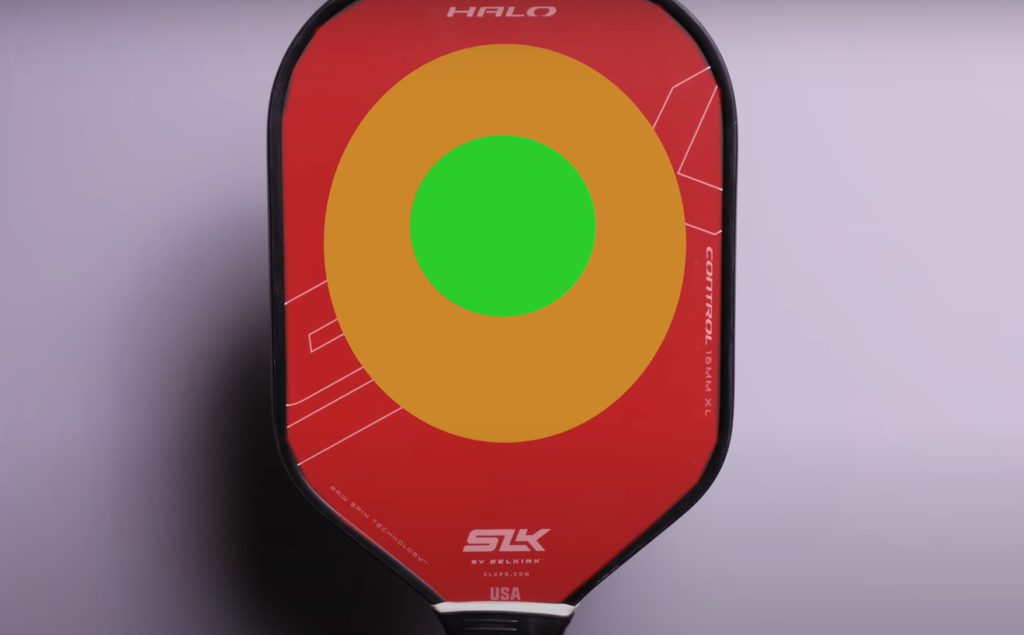
Here are some common types:
- Power Paddle: This type of paddle is specifically designed for players who heavily rely on their strength to deliver powerful shots. It is intentionally crafted to be slightly heavier, providing players with more stability and control during intense gameplay. Additionally, it boasts a larger sweet spot, which allows for greater forgiveness and precision, making it an excellent choice for aggressive players who seek to dominate the game.
- Control Paddle: This type of paddle is perfect for players who prioritize accuracy and precise ball placement. It is typically designed to be lighter, offering improved maneuverability and control on the court. With a smaller sweet spot, players can execute finesse shots with greater finesse and precision, enhancing their overall gameplay experience.
- Hybrid Paddle: As the name suggests, this type of paddle combines elements of both power and control paddles, making it suitable for players who want a balance of both aspects in their game. With its innovative design and advanced materials, this paddle offers enhanced power for explosive shots while still providing precise control for accurate placement. Whether you’re a beginner looking to improve your skills or a seasoned player seeking a versatile paddle, this paddle is the perfect choice to elevate your game to the next level.
Pickleball paddle weight
The weight of pickleball paddles is another crucial factor to consider when choosing the best one for you. Generally, pickleball paddles range from 6-14 ounces, with most falling between 7-9 ounces. The weight of your paddle can significantly impact your gameplay, and it’s essential to find the right balance that suits your style.
On the other hand, heavier paddles (9-14 ounces) provide more power and stability, perfect for aggressive players who prefer to overpower their opponents.Ultimately, the best paddle weight for you depends on your playing style and physical abilities. It’s essential to try out different weights and see which one feels most comfortable and effective for you.
Pickleball paddle grip size
The grip size of your pickleball paddle is also a crucial factor to consider. A proper grip allows you to handle the paddle comfortably, reducing strain on your wrist and arm during gameplay. It’s recommended to measure your hand size before purchasing a pickleball paddle as it comes in various grip sizes, usually ranging from 4 inches to 5 inches.
A smaller grip size (4 inches) is suitable for players with smaller hands, providing more control and a better feel of the paddle. A larger grip size (5 inches) is ideal for players with bigger hands, offering more power and stability when hitting shots. Pickleball paddles also come in a medium grip size (4 1/4 inches), which is the most popular and versatile choice among players.
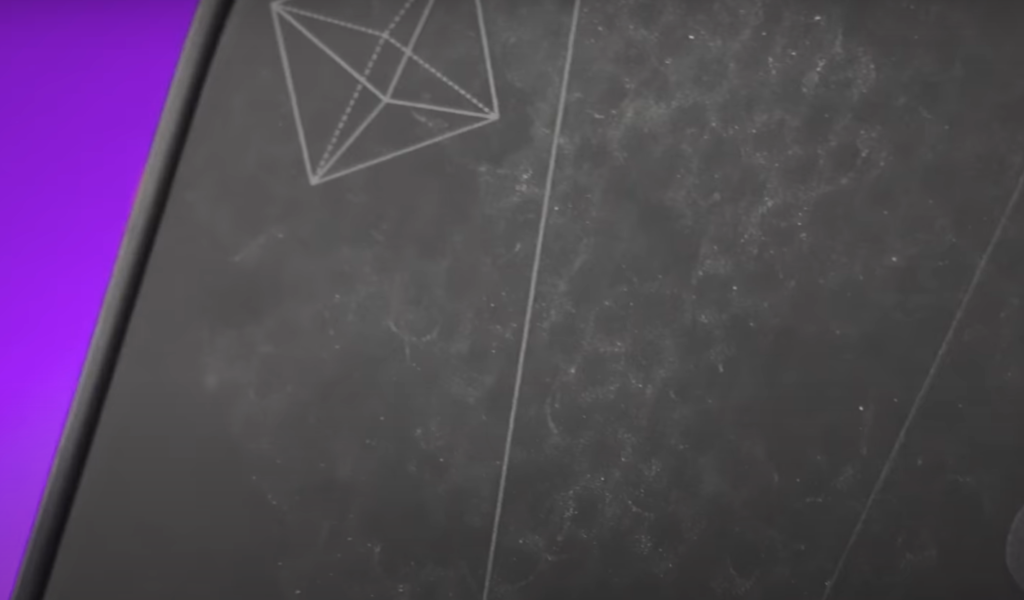
When selecting the grip size, make sure to try out different sizes to find the perfect fit for your hand. A comfortable grip can significantly improve your gameplay and prevent injuries caused by using a paddle with an incorrect grip size.
Pickleball Paddle Face material
The material of the paddle’s face is another essential factor to consider when choosing the best pickleball paddle. It can significantly impact the power, control, and spin on your shots.
- Graphite: This is a popular choice among professional players as it offers a lightweight yet durable surface for improved control and speed. It also provides excellent ball spin, making it suitable for advanced players.
- Composite: Made from a blend of different materials such as fiberglass, aluminum, and polymer, composite paddles offer a good balance of power and control. It is also more forgiving on off-center hits, making it an ideal choice for beginners.
- Wood: This is the most affordable option and provides excellent touch and control for finesse shots. However, wood paddles are not as durable as graphite or composite, making them more suitable for recreational players.
When choosing the material of your pickleball paddle face, consider your playing style and budget. Graphite and composite paddles are usually more expensive but offer better performance, while wood paddles are a budget-friendly option for beginners or casual players.
Pickleball Paddle Core Material
Apart from the face material, the core of your pickleball paddle also plays a significant role in its performance. The two most common core materials are polypropylene and polymer.
- Polypropylene: This is a lightweight and durable material that provides excellent power and speed on shots. It is ideal for aggressive players who want to hit powerful shots while maintaining control.
- Polymer: This material offers a softer and more forgiving feel on shots, making it suitable for players who prioritize control and finesse over power. It is also quieter than polypropylene paddles, making it a popular choice among recreational players.
When choosing the core material of your pickleball paddle, consider your playing style and preferences. If you’re an aggressive player looking for maximum power, a polypropylene core might be the best choice. If you’re a beginner or prefer finesse shots, a polymer core can provide better control and feel on your shots [2].
Choosing Between Composite and Graphite Paddles
Weight
Graphite paddles, known for their lightweight nature, are typically lighter than composite paddles. This characteristic not only makes them easier to maneuver and control on the court, but also grants players the ability to execute finesse shots with precision and react swiftly to fast-paced gameplay.
On the other hand, beginners or players with slower swing speeds might find a heavier composite paddle more suitable, as it can provide additional power and stability to their shots, aiding in building confidence and skill development.Durability
Composite paddles, made from a blend of materials like fiberglass and polymer, are renowned for their exceptional durability. This makes them an ideal choice for players who engage in frequent and intense shots, as they can withstand the demands of rigorous gameplay.
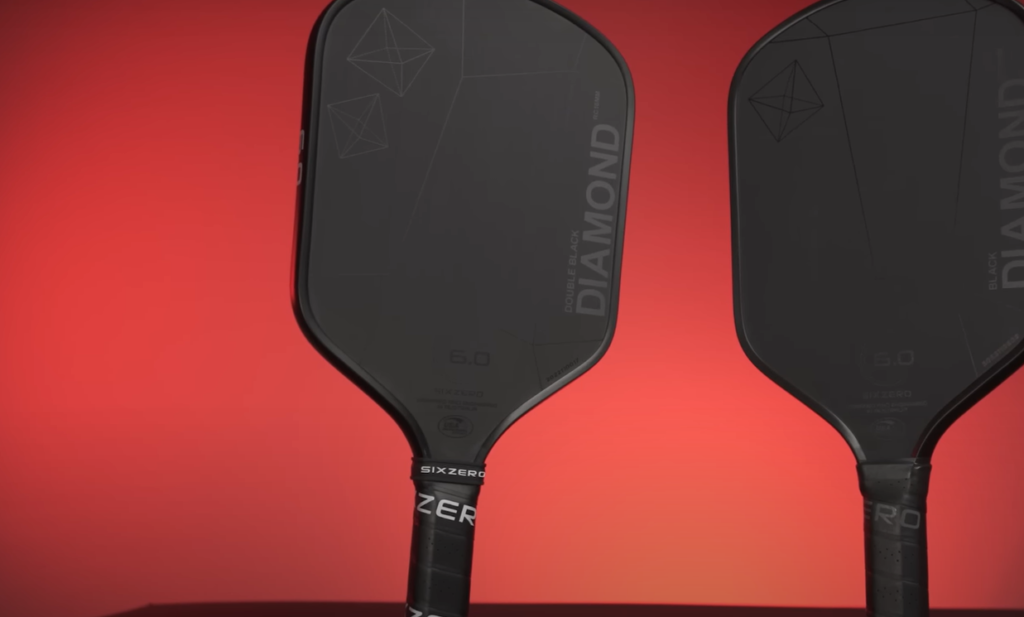
On the other hand, graphite paddles, while offering their own advantages, are known to be more susceptible to dings and scratches over time, which might impact their overall performance. Therefore, considering the long-term durability and resilience, composite paddles emerge as a superior option for avid players seeking reliability and longevity in their equipment.
Price
Graphite paddles are usually more expensive than composite paddles due to their advanced materials and design. If you’re on a budget, a composite paddle can provide similar performance at a lower cost. Graphite paddles can on average cost around $100-200, while composite paddles can range from $50-150. It’s essential to consider your budget and balance it with the features and performance you desire in a paddle.
Choosing between composite and graphite paddles ultimately depends on personal preference and playing style. Both have their own unique advantages, so it’s crucial to try out different options and see which one suits you best. Keep in mind the weight, durability, and price when making your decision. Remember to also consider other factors such as grip size and paddle face/core materials to find the perfect pickleball paddle for your game. Don’t hesitate to try out different paddles until you find the one that elevates your gameplay and helps you reach your full potential on the court!
The Pros and Cons of Graphite and Composite Pickleball Paddles
Graphite Paddles
Pros:
- Lightweight for easy maneuverability and quick reaction time.
- Ideal for players who prioritize finesse shots over power.
- Provides excellent ball spin for advanced players.
Cons:
- More expensive than composite paddles.
- Susceptible to dings and scratches, impacting long-term durability.
Composite Paddles
Pros:
- More affordable than graphite paddles.
- Durable and can withstand frequent and intense gameplay.
- Ideal for beginners or players with slower swing speeds.
Cons:
- Heavier than graphite paddles, which may affect maneuverability and finesse shots.
- Less ball spin compared to graphite paddles.
How Does a Graphite Paddle and Composite Paddle Play?
Graphite and composite paddles offer slightly different playing experiences due to their material composition. Graphite paddles, known for their lightweight nature, provide exceptional maneuverability and allow for quick reaction time on shots. This characteristic makes them the preferred choice for players who prioritize finesse and touch in their game.
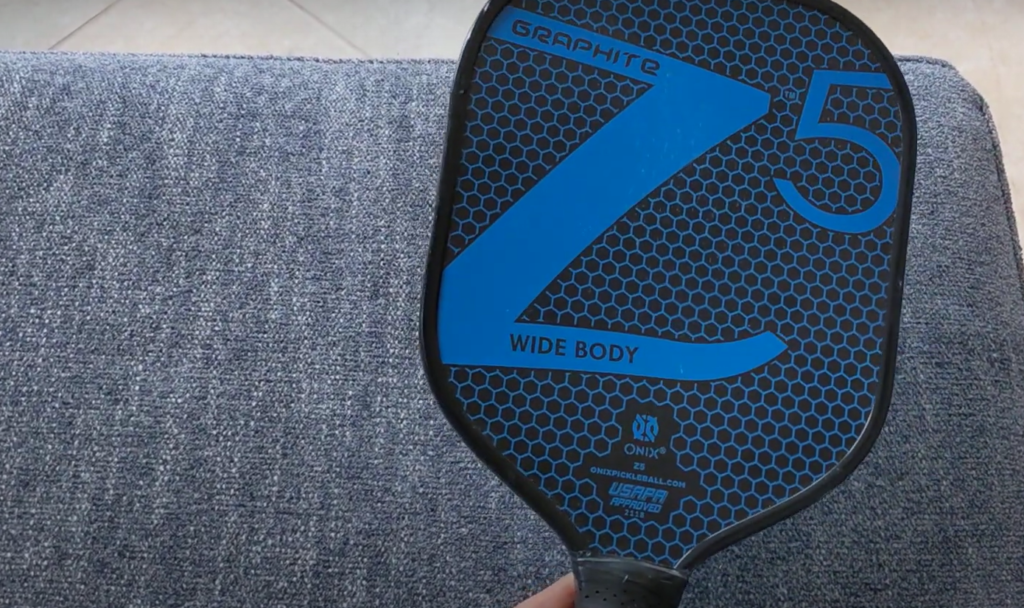
The lightness of graphite paddles not only enables players to swiftly respond to fast-paced rallies but also provides a delicate touch, allowing for precise ball placement and control. This combination of agility and finesse makes graphite paddles an excellent option for those seeking a dynamic and versatile playing experience on the pickleball court.
On the other hand, composite paddles are slightly heavier due to their construction using a blend of materials such as fiberglass and carbon fiber. This added weight contributes to better power and control on shots, allowing players to confidently execute precise and impactful moves on the court. Composite paddles are particularly suitable for players who engage in more aggressive and powerful shots, as they provide the necessary stability and responsiveness to excel in intense gameplay situations [3].
FAQ
What is the difference between graphite and carbon fiber paddles?
Graphite and carbon fiber paddles are two popular materials used in the production of paddles for sports such as ping pong, pickleball, and tennis. While both materials offer lightweight and durable options for players, there are some key differences between graphite and carbon fiber paddles.
Graphite paddles are made from layers of compressed graphite, which is a form of carbon. This material provides excellent strength and stiffness, making it a popular choice for players who want a powerful paddle. Graphite paddles are also known for their responsiveness, allowing players to feel the impact of their shots more accurately.
Carbon fiber paddles, on the other hand, are made from thin strands of carbon fibers that are woven together. This creates a lightweight and strong material that is also flexible. The flexibility of carbon fiber paddles can help reduce strain on players’ arms and wrists, making it a popular choice for those with injuries or looking to prevent them.
What is the difference between a composite and a wood paddle?
Composite and wood paddles are two different types of materials used in the production of paddles for various sports. While both offer their own unique advantages, there are some key differences between composite and wood paddles.
Composite paddles are made from a combination of different materials such as fiberglass, carbon fiber, or polymer. This allows manufacturers to create a paddle with specific properties such as lightweight, durability, or flexibility. Composite paddles are popular among players who want a customizable paddle that meets their specific needs.
Wood paddles, on the other hand, are made from various types of wood such as maple, birch, or poplar. These materials offer a natural and traditional feel to the paddle. Wood paddles tend to be heavier compared to composite paddles, providing players with more power in their shots. They also tend to have a softer touch and provide better control for players.
Which type of paddle is best for beginners?
Choosing the right paddle as a beginner can be overwhelming, especially with so many options available on the market. However, there are some general guidelines you can follow when selecting a paddle as a beginner.
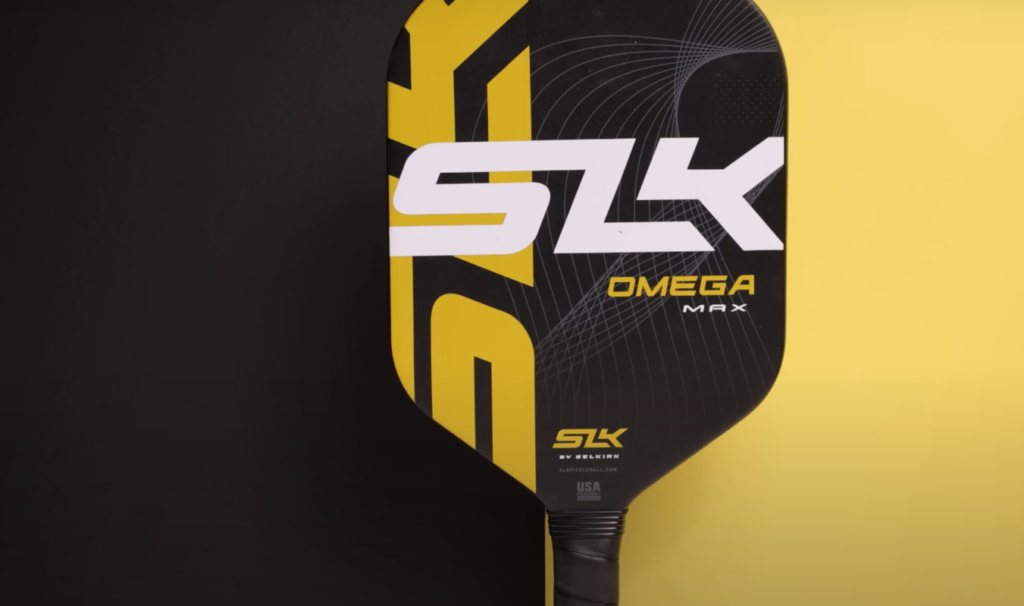
Firstly, consider the weight of the paddle. Lighter paddles are generally easier to maneuver and require less effort, making them a good choice for beginners. Next, think about the grip size of the paddle. It’s essential to have a comfortable grip that allows you to hold onto your paddle with ease. Lastly, consider the type of material used in the paddle. As a beginner, it’s best to start with an affordable and durable option such as a wood or composite paddle.
In addition to these factors, it’s crucial for beginners to spend time trying out different paddles and finding one that feels comfortable and suits their playing style. It may also be helpful to seek advice from experienced players or coaches who can provide recommendations based on your skill level and goals. Ultimately, the best paddle for a beginner is one that allows them to improve their skills and enjoy the sport.
What is the difference between indoor and outdoor paddles?
Indoor and outdoor paddles are designed for specific playing environments, so it’s essential to choose the right one for your game.
Indoor paddles are typically made from softer materials such as wood or composite. These paddles provide better control and touch, making them ideal for playing on smooth surfaces like gym floors. They also tend to be lighter, allowing players to move quickly and easily.
Outdoor paddles, on the other hand, are made from more durable materials such as polymer or graphite. These paddles can withstand rough surfaces like concrete and asphalt commonly found in outdoor courts. They also tend to be heavier and have a harder surface, providing more power for shots.
It’s crucial to use the appropriate paddle for each playing environment to ensure optimal performance and prolong the lifespan of your paddle. Using an indoor paddle on outdoor surfaces can cause damage, and using an outdoor paddle indoors may result in reduced control and touch.
How often should you replace your paddle?
The lifespan of a paddle can vary depending on the material, frequency of use, and playing environment. However, as a general rule of thumb, it’s recommended to replace your paddle every 6-12 months or when you start noticing significant wear and tear.
Signs that it may be time to replace your paddle include cracks or dents in the surface, loose edges or handle, and a decrease in performance. Over time, paddles can lose their original properties such as weight and grip size, affecting your gameplay.
Regularly inspecting your paddle for any signs of wear and tear is crucial to ensure it’s in good condition. Proper care and maintenance can also help prolong the lifespan of your paddle. For example, storing it in a protective case and avoiding exposure to extreme temperatures can help prevent damage.
How to maintain pickleball paddles?
Maintaining your pickleball paddles is essential to ensure they stay in good condition and perform well. Here are some tips on how to maintain your paddles:
- Clean after each use: It’s important to clean your paddle after each use to remove any dirt, sweat, or debris that may have accumulated on the surface. Use a damp cloth with mild soap and water to gently wipe down the paddle.
- Dry thoroughly: After cleaning, make sure to dry your paddle completely before storing it in a case or bag. This prevents moisture from causing damage or warping the materials.
- Avoid extreme temperatures: Exposure to extreme heat or cold can cause damage to your paddles, so it’s essential to store them in a cool and dry place.
- Protect the edges: The edges of a paddle are more prone to damage, so it’s important to protect them by using edge guard tape or storing your paddles in a protective case.
Useful Video: REVIEW: ONIX Graphite Z5 Graphite Carbon Fiber Pickleball Paddle With Cushion Comfort Grip
Conclusion Paragraph
So, the differences between carbon fiber and graphite pickleball paddles are many and varied. However, one thing is for sure – both materials offer unique advantages and benefits that cater to different playing styles and preferences.
While carbon fiber paddles are known for their lightweight properties and increased power, graphite paddles offer better control and precision on the court. Ultimately, the choice between these two materials comes down to personal preference and playing style.
But no matter which material you choose, one thing is certain – both carbon fiber and graphite pickleball paddles are high-quality options that will enhance your game and elevate your performance on the court.
References:
- https://kiwipickleball.com/blogs/news/the-different-materials-used-in-pickleball-paddles
- https://www.paddletek.com/blogs/news/paddle-buyers-guide
- https://www.paddletek.com/blogs/news/pickleball-paddle-materials





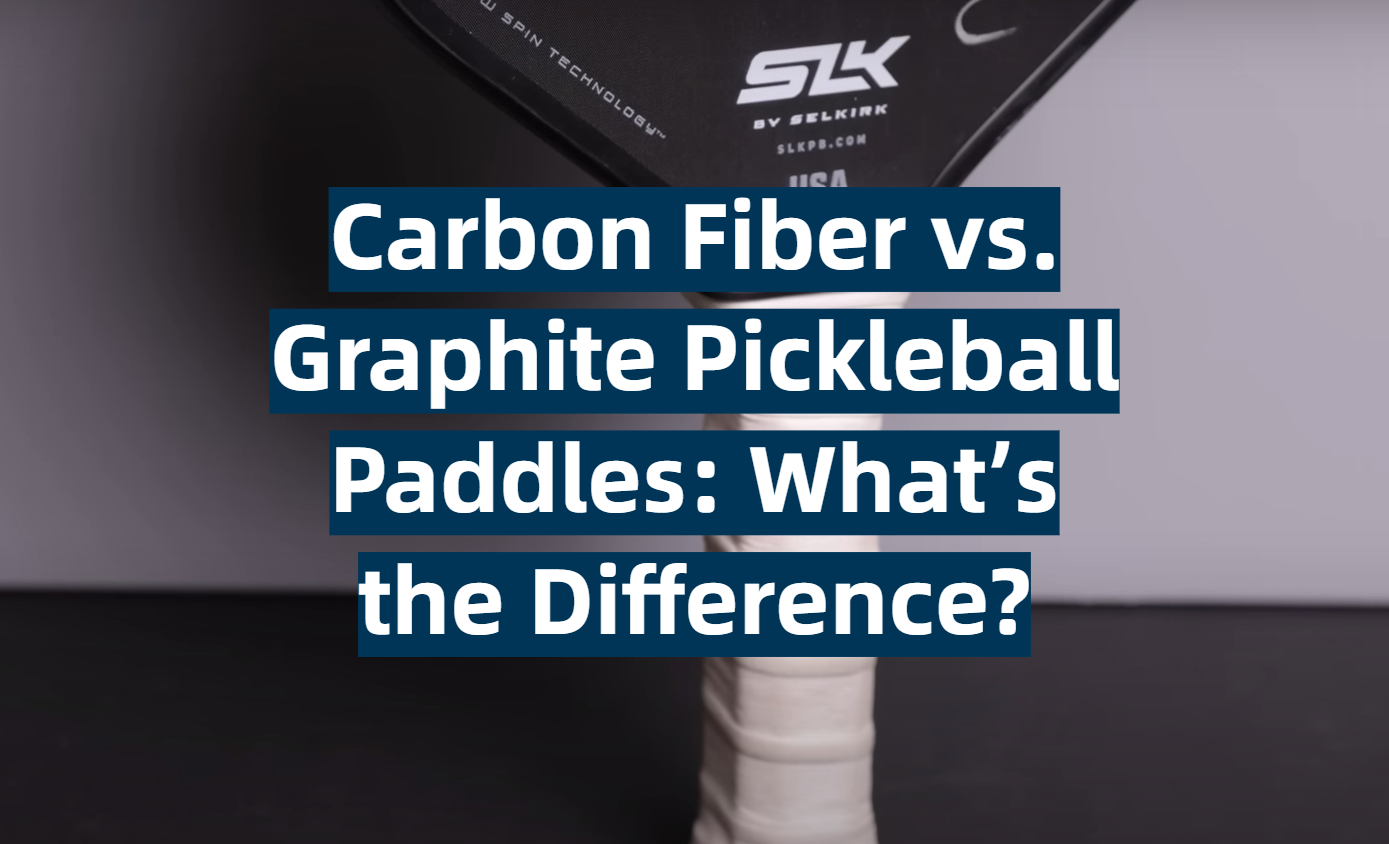
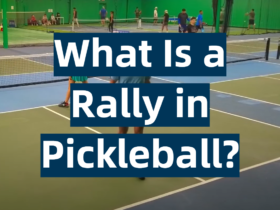
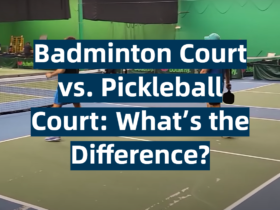
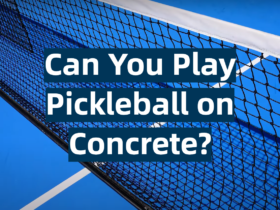
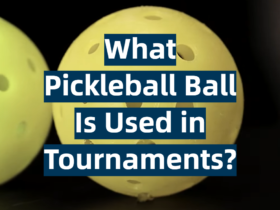
Leave a Review